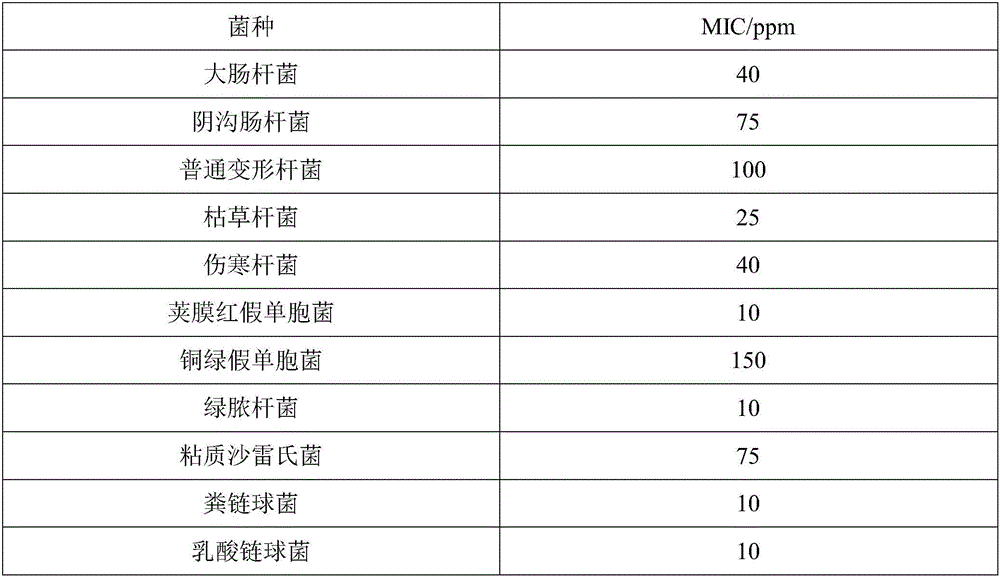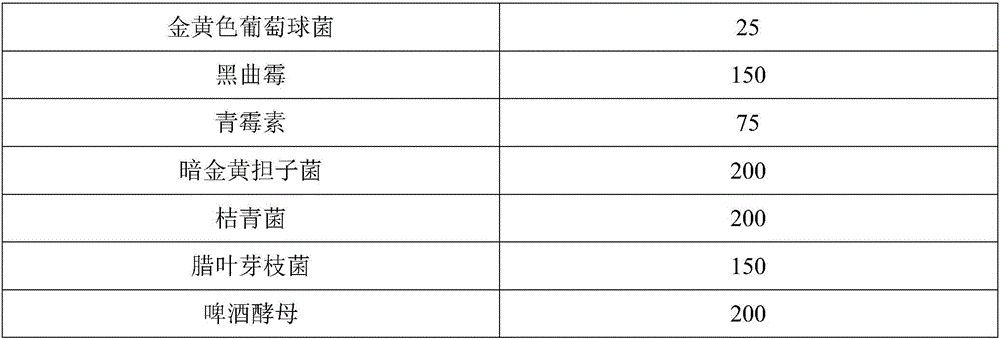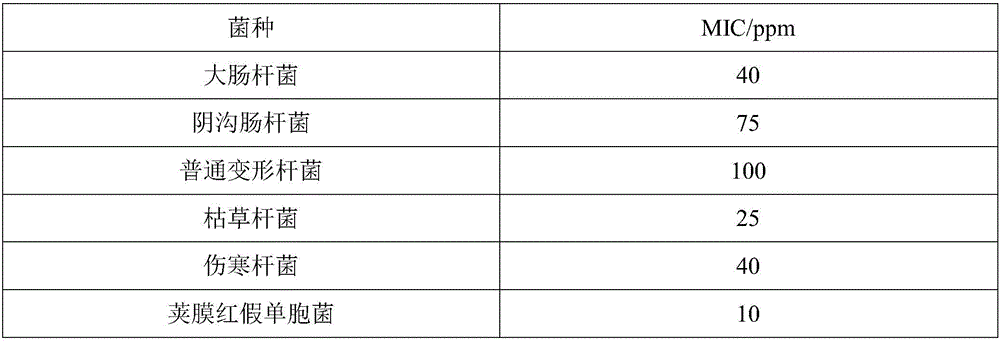Novel environment friendly printing ink and manufacture method and application thereof
A printing ink and environmental protection technology, applied in the field of new environmentally friendly printing inks, can solve the problems of unsatisfactory sterilization and preservatives, demulsification viscosity, abnormality, etc., and achieve improved yellowing resistance, high adsorption capacity, improved dispersibility and The effect of high temperature resistance
- Summary
- Abstract
- Description
- Claims
- Application Information
AI Technical Summary
Problems solved by technology
Method used
Image
Examples
Embodiment 1
[0026] A new type of environmentally friendly printing ink, made of the following raw materials in parts by weight: 26 parts of vinyl chloride-acrylate copolymer resin, 3 parts of methyl methacrylate, 3 parts of acrylic resin, 4 parts of acetyl tri-n-butyl citrate , 10 parts of butyl octanol, 0.3 parts of 2-mercaptobenzimidazole, 0.4 parts of diazolidinyl urea, 1 part of attapulgite, 0.6 parts of ammonium persulfate, 0.5 parts of chitosan, 2 parts of palm oil, organic 3 parts of pigments, 4 parts of additives, appropriate amount of water.
[0027] The auxiliary agent is made of the following raw materials in parts by weight: 5 parts of organic bentonite, 1 part of hollow glass microspheres, 2 parts of rutile titanium dioxide, 4 parts of white petrolatum, 8 parts of isobutyl methacrylate, polymethacrylic acid 7 parts of ester, 0.4 parts of butyl tin mercaptide, 0.3 parts of stannous sulfate, 2 parts of triethylaluminum, 1 part of red dry oil, 3 parts of dimethyl silicone oil, 2...
Embodiment 2
[0041]A new type of environmentally friendly printing ink, made of the following raw materials in parts by weight: 32 parts of vinyl chloride-acrylate copolymer resin, 4 parts of methyl methacrylate, 9 parts of acrylic resin, 7 parts of acetyl tri-n-butyl citrate , 13 parts of butyl octanol, 0.6 parts of 2-mercaptobenzimidazole, 0.7 parts of diazolidinyl urea, 4 parts of attapulgite, 0.9 parts of ammonium persulfate, 0.8 parts of chitosan, 3 parts of palm oil, organic 5 parts of pigments, 6 parts of additives, appropriate amount of water.
[0042] The auxiliary agent is made of the following raw materials in parts by weight: 5 parts of organic bentonite, 1 part of hollow glass microspheres, 2 parts of rutile titanium dioxide, 4 parts of white petrolatum, 8 parts of isobutyl methacrylate, polymethacrylic acid 7 parts of ester, 0.4 parts of butyl tin mercaptide, 0.3 parts of stannous sulfate, 2 parts of triethylaluminum, 1 part of red dry oil, 3 parts of dimethyl silicone oil, 2...
Embodiment 3
[0055] A new type of environmentally friendly printing ink, made of the following raw materials in parts by weight: 29 parts of vinyl chloride-acrylate copolymer resin, 4 parts of methyl methacrylate, 6 parts of acrylic resin, 5 parts of acetyl tri-n-butyl citrate , 12 parts of butyl octanol, 0.4 parts of 2-mercaptobenzimidazole, 0.5 parts of diazolidinyl urea, 2 parts of attapulgite, 0.8 parts of ammonium persulfate, 0.8 parts of chitosan, 3 parts of palm oil, organic 5 parts of pigments, 6 parts of additives, appropriate amount of water.
[0056] The auxiliary agent is made of the following raw materials in parts by weight: 5 parts of organic bentonite, 1 part of hollow glass microspheres, 2 parts of rutile titanium dioxide, 4 parts of white petrolatum, 8 parts of isobutyl methacrylate, polymethacrylic acid 7 parts of ester, 0.4 parts of butyl tin mercaptide, 0.3 parts of stannous sulfate, 2 parts of triethylaluminum, 1 part of red dry oil, 3 parts of dimethyl silicone oil, ...
PUM
 Login to View More
Login to View More Abstract
Description
Claims
Application Information
 Login to View More
Login to View More - R&D
- Intellectual Property
- Life Sciences
- Materials
- Tech Scout
- Unparalleled Data Quality
- Higher Quality Content
- 60% Fewer Hallucinations
Browse by: Latest US Patents, China's latest patents, Technical Efficacy Thesaurus, Application Domain, Technology Topic, Popular Technical Reports.
© 2025 PatSnap. All rights reserved.Legal|Privacy policy|Modern Slavery Act Transparency Statement|Sitemap|About US| Contact US: help@patsnap.com



